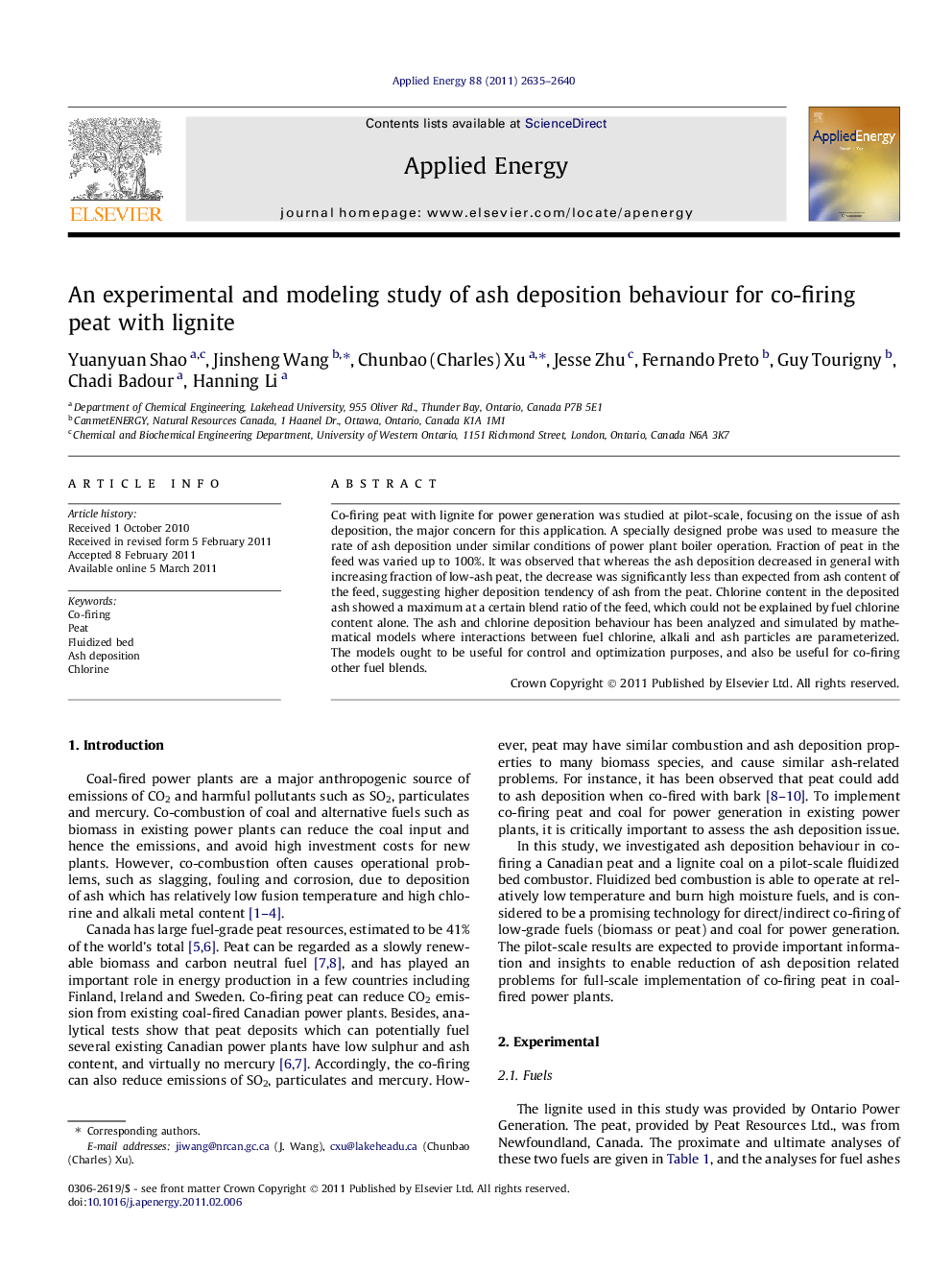| Article ID | Journal | Published Year | Pages | File Type |
|---|---|---|---|---|
| 243807 | Applied Energy | 2011 | 6 Pages |
Co-firing peat with lignite for power generation was studied at pilot-scale, focusing on the issue of ash deposition, the major concern for this application. A specially designed probe was used to measure the rate of ash deposition under similar conditions of power plant boiler operation. Fraction of peat in the feed was varied up to 100%. It was observed that whereas the ash deposition decreased in general with increasing fraction of low-ash peat, the decrease was significantly less than expected from ash content of the feed, suggesting higher deposition tendency of ash from the peat. Chlorine content in the deposited ash showed a maximum at a certain blend ratio of the feed, which could not be explained by fuel chlorine content alone. The ash and chlorine deposition behaviour has been analyzed and simulated by mathematical models where interactions between fuel chlorine, alkali and ash particles are parameterized. The models ought to be useful for control and optimization purposes, and also be useful for co-firing other fuel blends.
Research highlights▸ Dependences of ash deposition rate and ash chlorine content on the fraction of peat are modeled. ▸ Results of simulation agree well with experimental data. ▸ The model predicts a maximum ash chlorine content at a certain peat fraction. ▸ Based on the model, optimal peat fraction could be determined for smooth operations.
